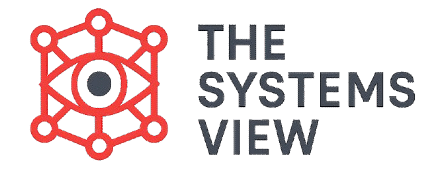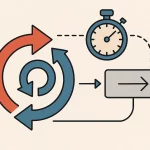Why do things constantly fall apart? Why do organizations lose focus? Why does a clean room always become messy? The answer lies in the universal force called Entropy.
Entropy is the tendency for all physical systems to move toward disorder, randomness, and breakdown. It is the natural law of decay. The founders of Cybernetics realized that they were studying the single, most important counter-force to this universal law: Information.
The relationship between information and entropy is key to understanding how living systems and machines manage to create and maintain islands of order in a chaotic universe. This concept forms the philosophical heart of Cybernetics, linking physics to communication.
1. The Threat of Entropy
Entropy is a concept borrowed from thermodynamics, the science of heat and energy.
Entropy and Disorder
In simple terms, entropy is a measure of a system’s disorder or the amount of unusable energy it contains.
- Example: A neatly stacked pile of wood (low entropy) has order and potential. If the pile collapses into a messy heap (high entropy), the order is gone, and the information about the system’s structure is lost.
Norbert Wiener, the founder of Cybernetics, saw entropy as the ultimate threat to all complex systems. He believed that life itself, and all forms of control, are a constant struggle against this natural decay.
The Message is Lost
In communication, entropy explains why messages often degrade as they travel. Every time a message is relayed or copied, there is a chance for “noise” or distortion to creep in. This “noise” is an increase in entropy.
Wiener argued that without constant correction and renewal, all information will eventually be lost to random noise.
2. Information: The Force for Order
If entropy drives disorder, then information is the primary force that creates and maintains order.
Information as “The Difference That Makes a Difference”
Cyberneticist Gregory Bateson provided the most precise definition of information in this context: “the difference that makes a difference.”
- Information is Not Energy: Information is not the physical wire, the electronic signal, or the sound wave. It is the pattern and the relationship encoded in those things.
- Creating Order: When a system processes information, it is choosing to act based on a pattern, rather than on random chance. This act of patterned, purposeful action is the creation of order.
For example, a machine simply uses energy. But when that machine uses information (like instructions from a program) to perform a task, it is converting random energy into ordered, purposeful action, locally reducing entropy.
3. The Cybernetic Loop: Fighting Decay
The central mechanism for fighting entropy is the feedback loop.
The Need for Correction
A feedback loop actively seeks out the disorder (the error signal) in a system and sends a counteracting message to restore order.
- System Decay (Entropy): A house’s temperature drifts too low due to external cold.
- Sensing (Information): The thermostat measures the current temperature and creates an information signal about the difference (the error).
- Correction (Control): The thermostat uses this information to turn on the heater, actively restoring the original order (the goal temperature).
This continuous cycle of sensing and correction is the only way a complex system can remain stable and functional over time.
4. Application to Society and Mind
The Information vs. Entropy principle is not limited to machines. It applies profoundly to human organizations and thought.
The Mind Against Randomness
Wiener believed that the human mind itself is an organized system engaged in an anti-entropic effort. Thinking, learning, and remembering are all forms of organizing sensory inputs and experiences into coherent patterns. Mental breakdown, conversely, can be seen as the mind’s slide toward randomness and disorder.
Organizational Entropy
In business, organizational entropy is the inevitable decay of focus, culture, and efficiency.
- High Entropy: A company with high entropy has unclear goals, poor communication, and confused roles. Resources are wasted, and chaos dominates.
- Fighting Back: Effective leadership and clear communication are forms of negative feedback designed to reduce this organizational entropy. They constantly provide information to clarify goals and correct deviations, maintaining order.
The Key Insight: Cybernetics teaches us that any system that stops gathering and processing new information has essentially surrendered to entropy. To survive, a system must be an active, self-regulating engine that constantly creates order from the chaos of its environment.
Conclusion
The relationship between information and entropy is the philosophical cornerstone of Cybernetics. Entropy is the universal tendency toward disorder, while information, as the “difference that makes a difference,” is the necessary force that creates and maintains pockets of order in the universe. By harnessing the negative feedback loop to process error signals and exert control, living systems and machines actively fight this decay. Understanding this battle for order is essential for anyone seeking to design stable, purposeful, and long-lasting systems.



